Bands and tubing, used for resistance training in land exercise, have made their way into the aquatic environment. Chlorine is hard on rubberized equipment, but chlorine resistant bands and tubing are now available. It prolongs their life to rinse them in fresh water after every use, but even so you have to inspect them for deterioration before using them with your class.
Many of the same exercises done with rubberized equipment on land can be done in the pool. The equipment has to be anchored to something and the resistance is in pulling away from the anchor point. In the water, the anchor is usually another body part, such as the opposite hand or a foot. When designing exercises you have to consider whether the body position is practical in the water (for example, a reclining position will not work), whether your participants can maintain good alignment with the exercise, and whether your participants are able to attach the band to a body part that is under water. Bands can be tied in a loop and placed around the ankles for leg exercises, but I am not a big fan of that. Some people have difficulty getting the loop around the ankles for one thing, and the instructor has to untie all the knots after class. You can buy a set of flat bands and a set of loops to solve one of those problems. If your participants have difficulty getting a loop around their ankles you can get tubing instead. It is fairly easy to put your foot through the handles of the tubing, and the tubing is also long enough that you can step on it while holding the ends in your hands. The down side is that tubing is significantly more expensive than the bands. I use the bands and focus mainly on exercises for the upper body.
When using bands for the upper body in shallow water, the participant is usually in a stable lunge or squat position. In deep water, often you have to perform a stabilizing leg movement, such as jog, cross-country ski or jumping jacks while focusing on the arms. Here are some band exercises you can try:
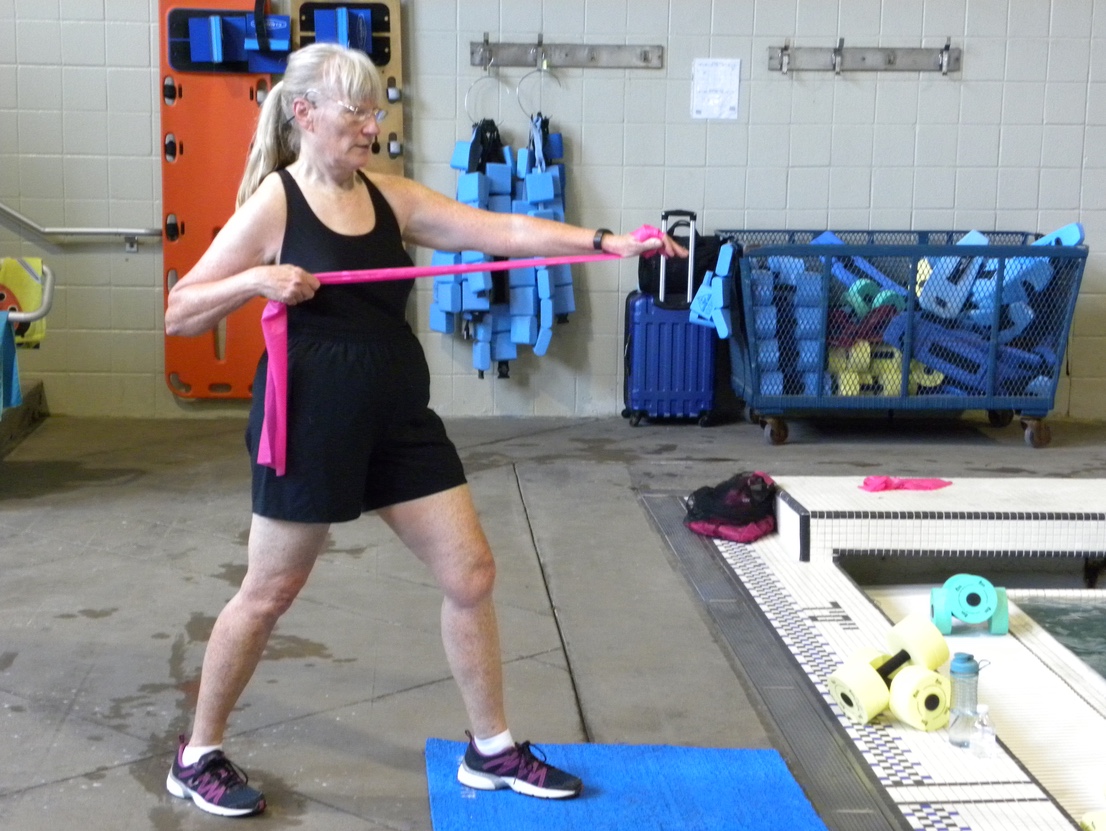
Bowstring Pull Works the trapezius and rhomboids Lunge position in shallow water Cross-country ski in deep water
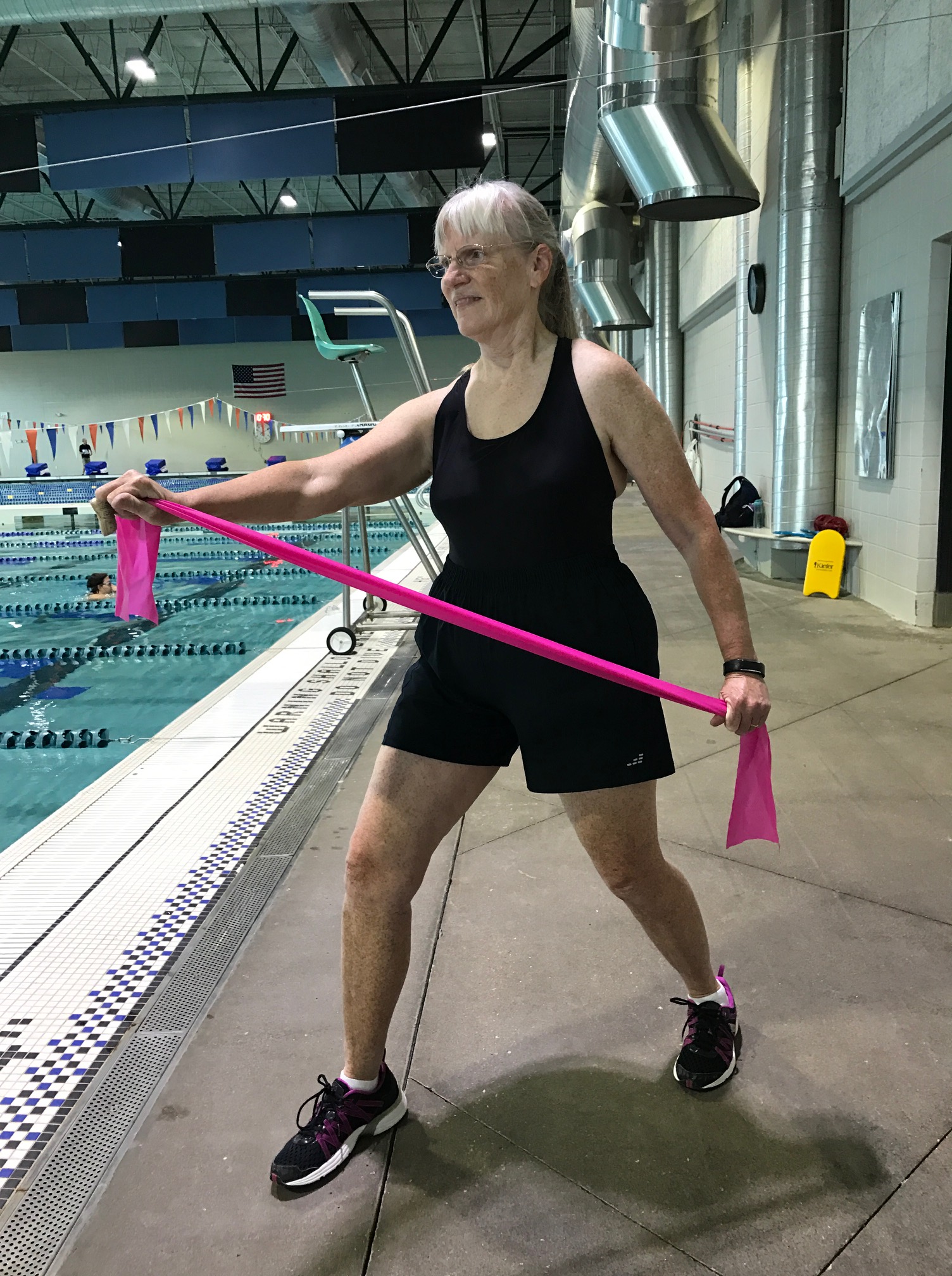
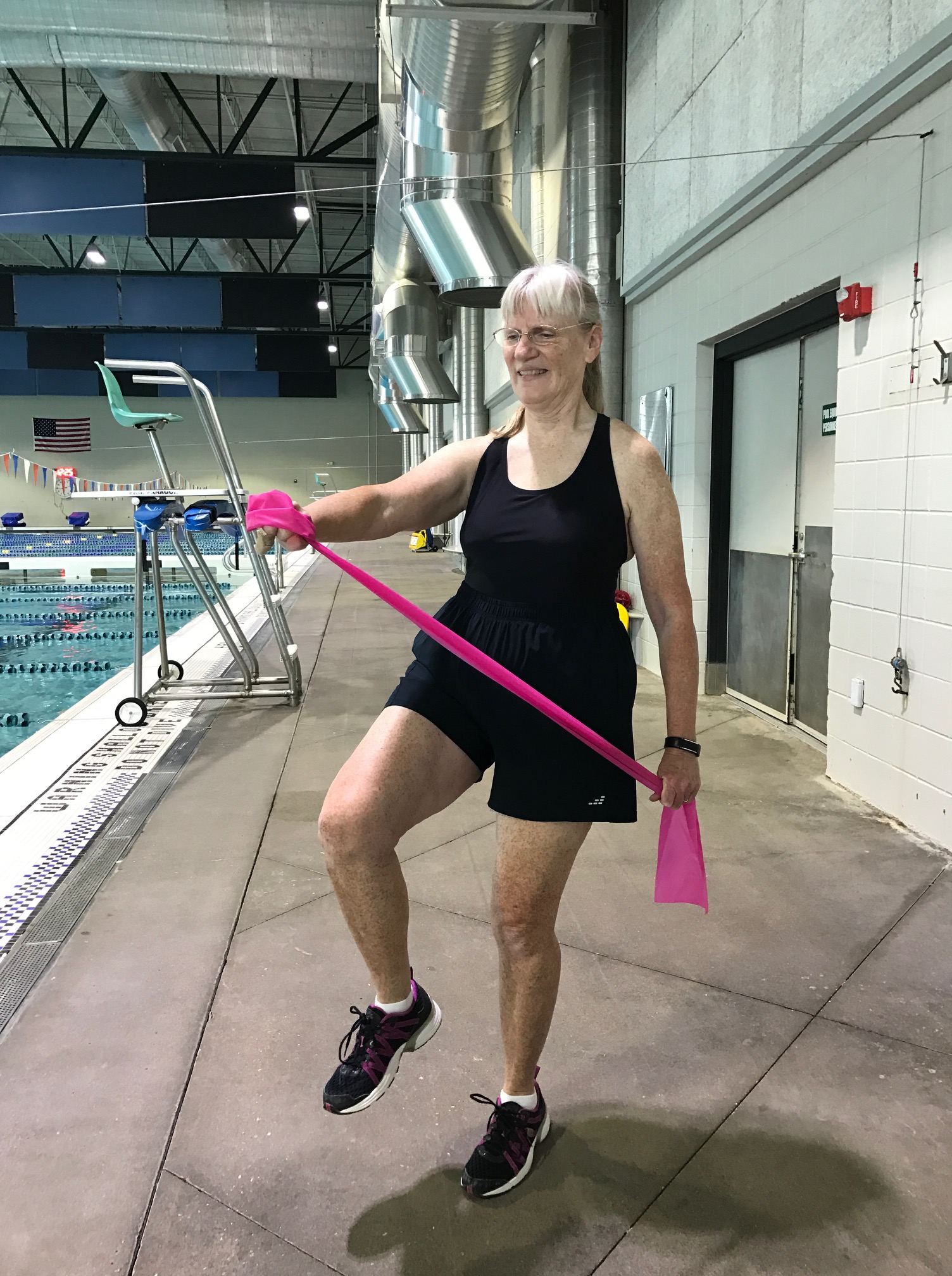
One Arm Press-Down Works the latissimus dorsi and posterior deltoids Lunge position in shallow water Jog in deep water
Chest Press Put the band around the upper back, hold the ends in the hands and push forward Works the pectoralis major Squat position in shallow water Jumping jacks in deep water
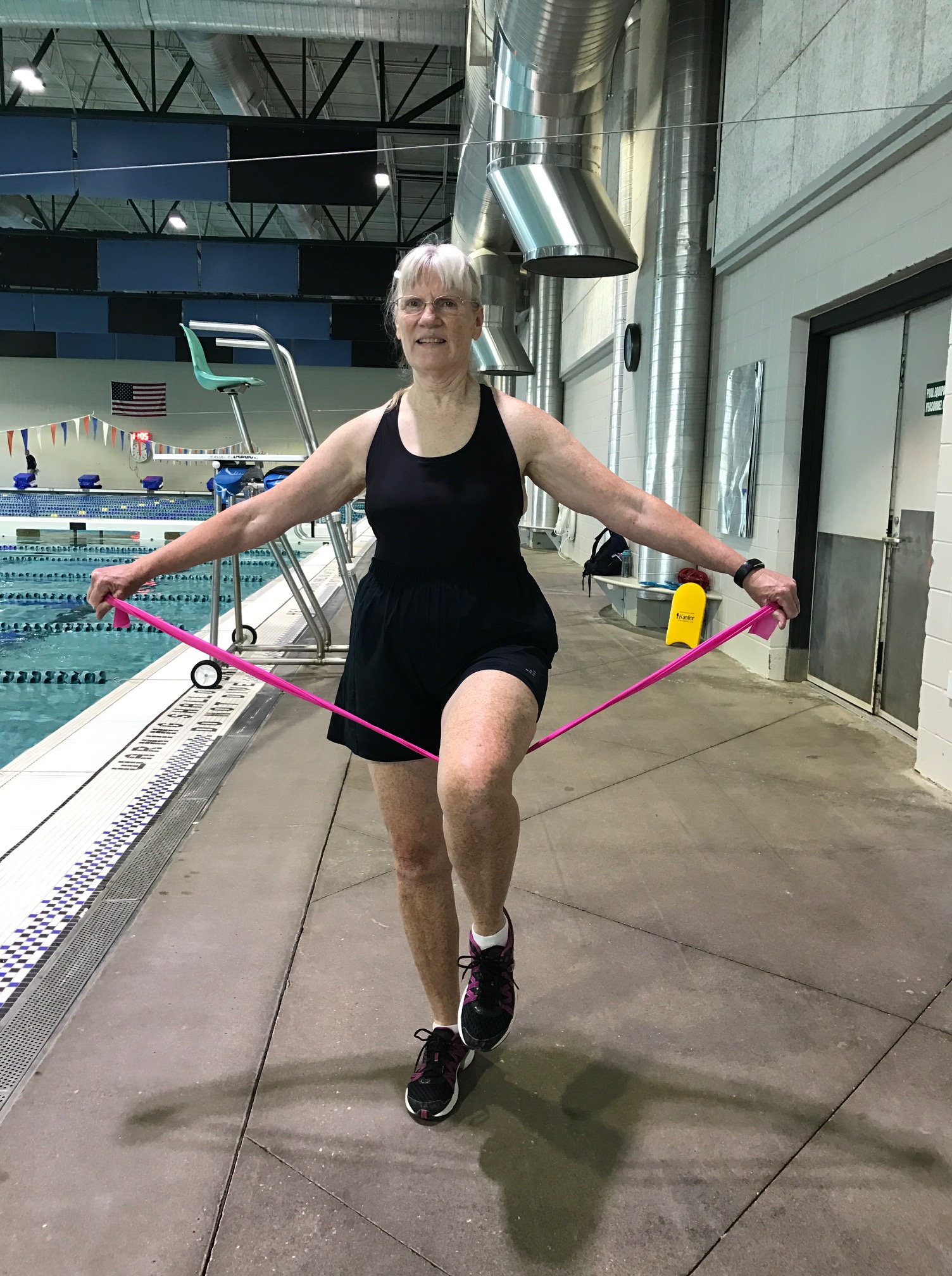
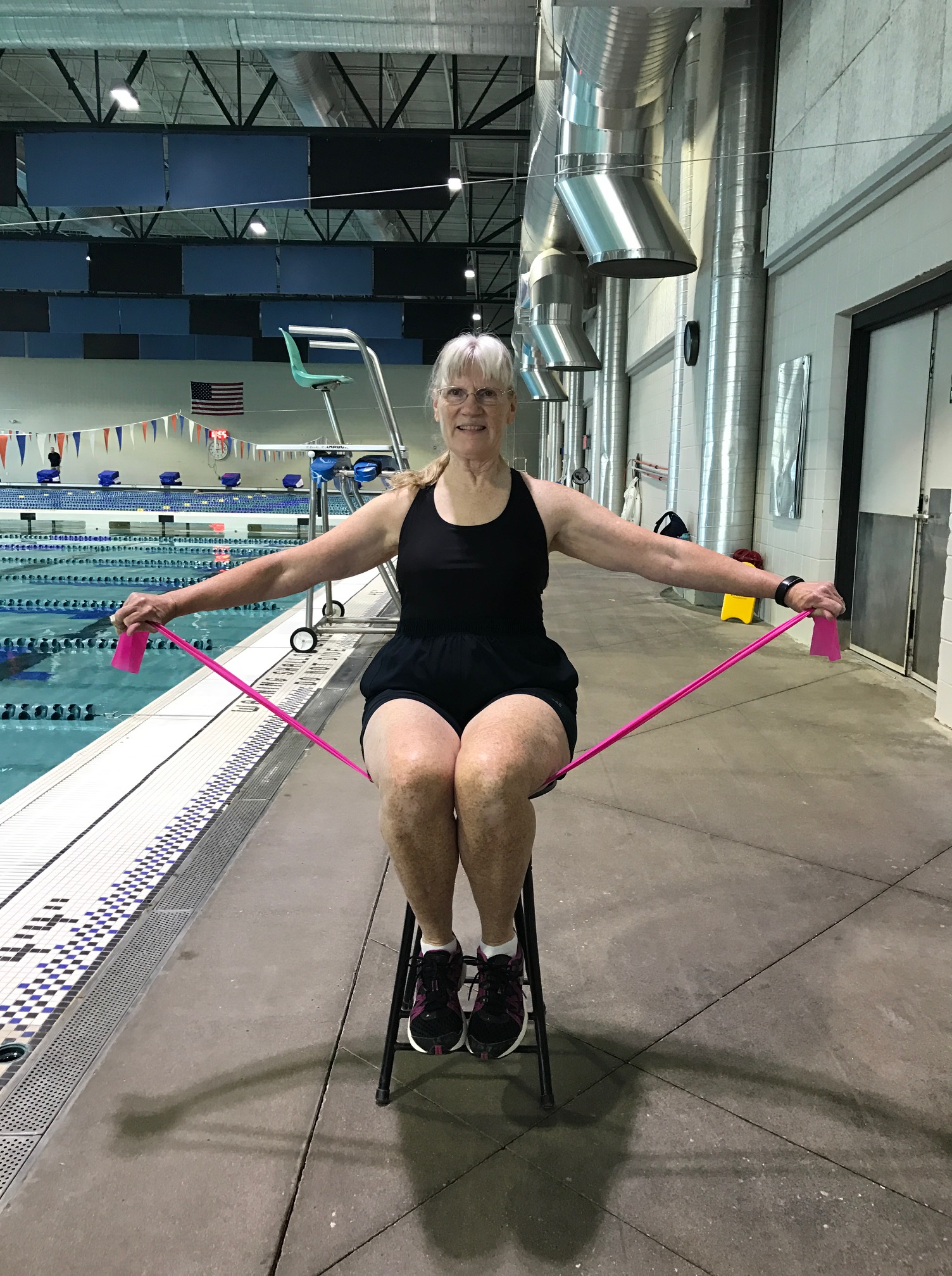
Arm Lift to Sides Works the medial deltoids Stand on one foot with band under the other thigh in shallow water Seated position with band under thighs in deep water
Arm Curl In the same position as for arm lift to sides, hold the ends of the band with palms up Works the biceps
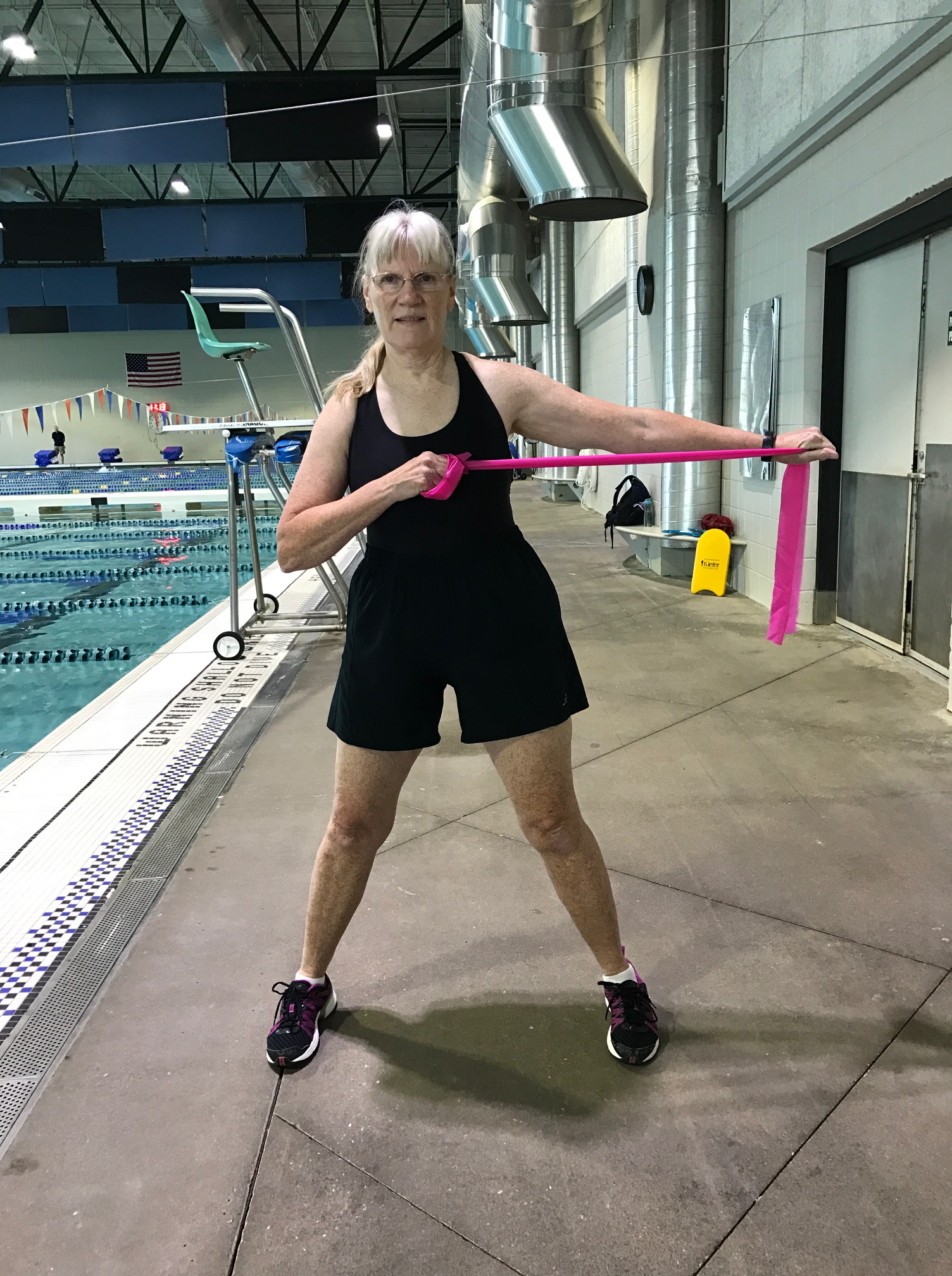
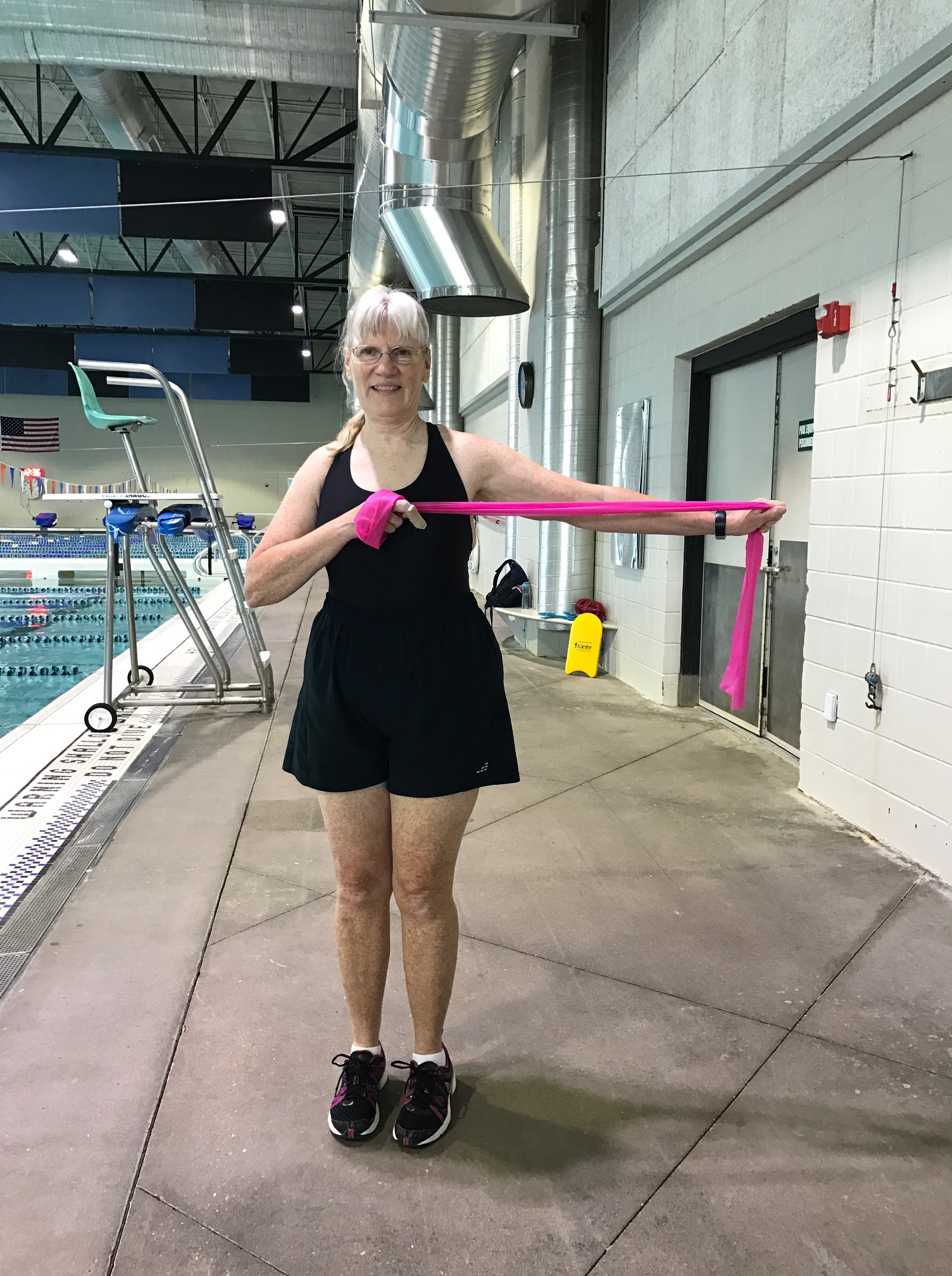 Elbow Sweep Out Works the triceps Squat position in shallow water Jumping jacks in deep water – extend the elbow as the feet come together
Elbow Sweep Out Works the triceps Squat position in shallow water Jumping jacks in deep water – extend the elbow as the feet come together
Forearm Press Hold the ends of the bands with the elbows down by the waist and pull apart Works the rotator cuff Squat position in shallow water Jumping jacks in deep water – pull the ends apart as the feet come together
For information about how to modify these exercises, see my book Water Fitness Progressions. The book can be ordered from Human Kinetics (the publisher) or from Amazon.com. Just click on whichever source you wish to order from and the link will take you there.
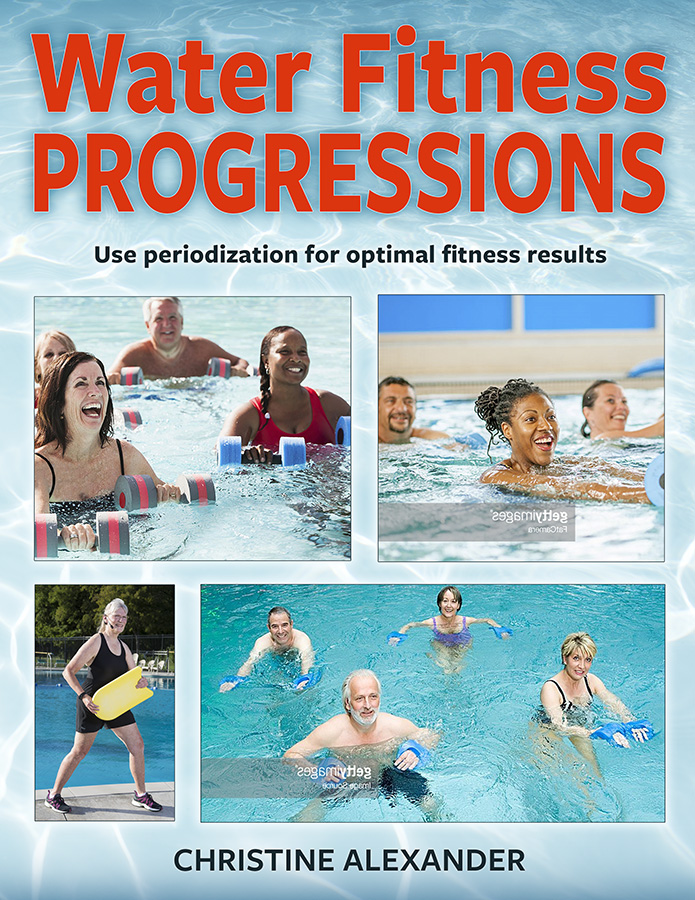
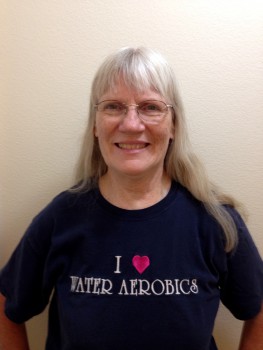
See you in the pool!
Chris Alexander

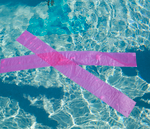
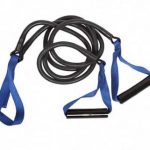

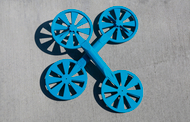

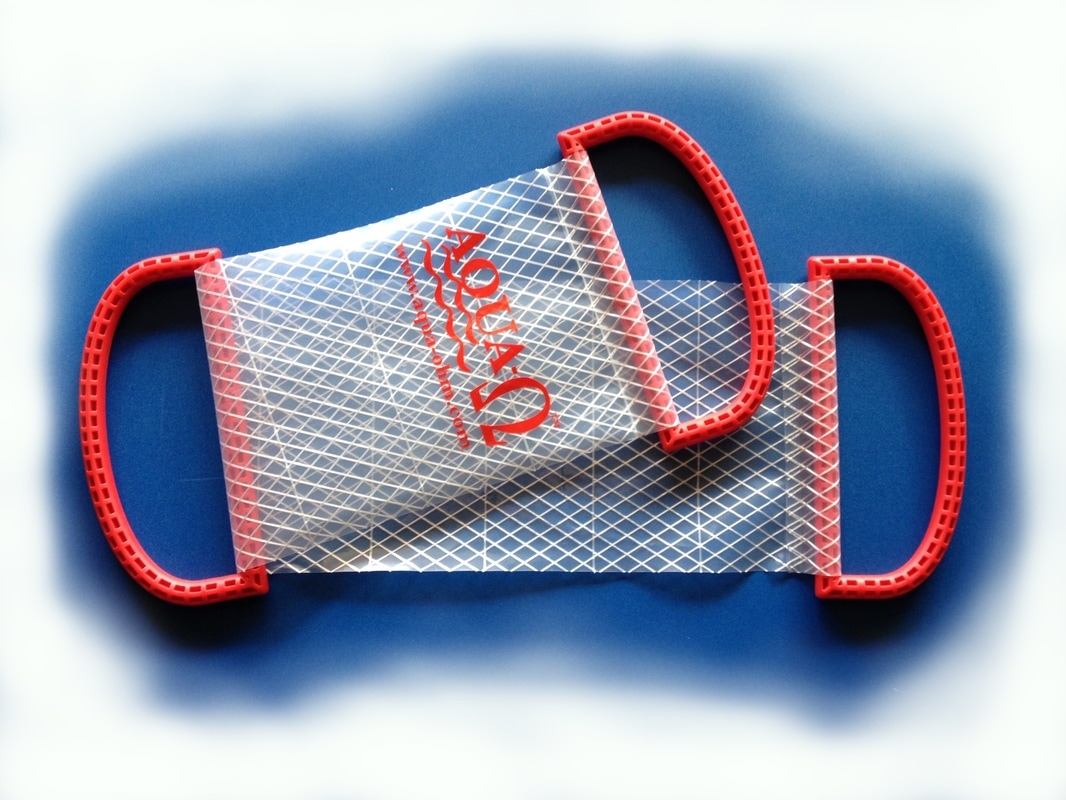
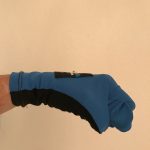
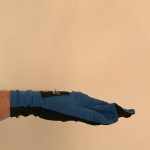
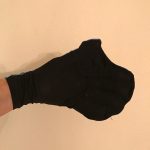
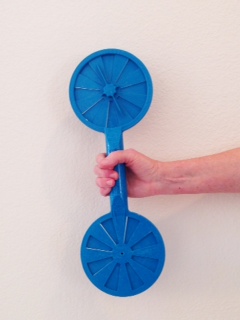
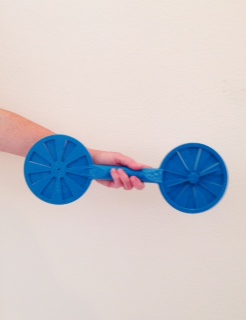
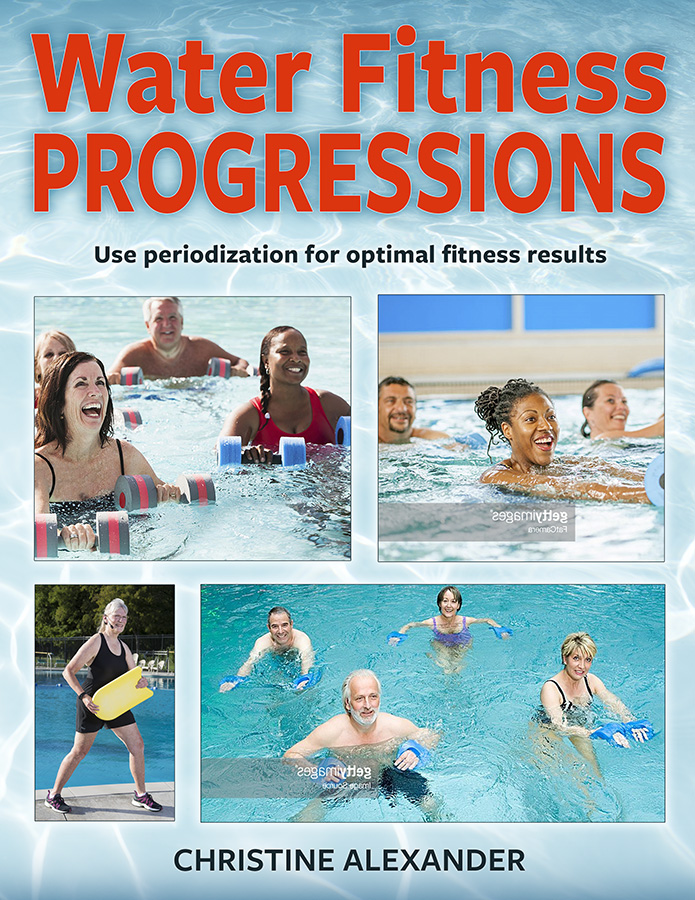
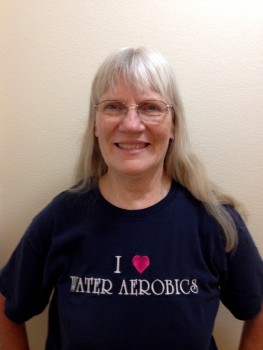

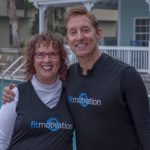


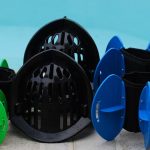
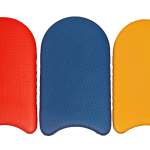
 One piece of equipment that I was curious about is the AquaPole. It has a heavy base that anchors the pole in the water. We used the pole to perform suspended exercises in Brown and Johnson’s AquaPole Strength and Toning class, but you can also attach resistance bands or a boxing bag to it. I may never have the opportunity to use the equipment again, but it was fun to try it out.
One piece of equipment that I was curious about is the AquaPole. It has a heavy base that anchors the pole in the water. We used the pole to perform suspended exercises in Brown and Johnson’s AquaPole Strength and Toning class, but you can also attach resistance bands or a boxing bag to it. I may never have the opportunity to use the equipment again, but it was fun to try it out.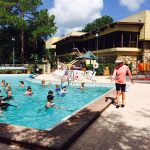



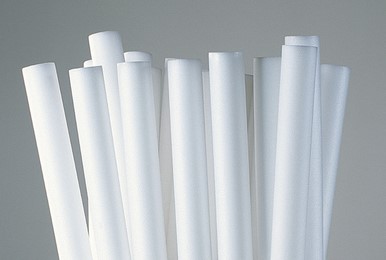
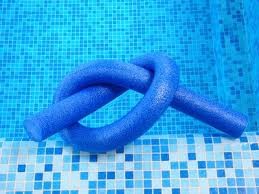 to increase its surface area. I am not a big fan of that because it makes the noodle curly and useless for any other purpose. A better option is to use the larger more dense foam noodles available from Hydro-Fit. You can also progress to using foam dumbbells instead of noodles.
to increase its surface area. I am not a big fan of that because it makes the noodle curly and useless for any other purpose. A better option is to use the larger more dense foam noodles available from Hydro-Fit. You can also progress to using foam dumbbells instead of noodles.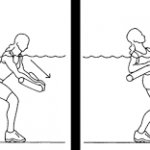
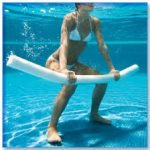
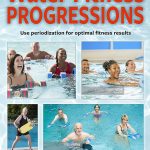
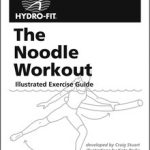
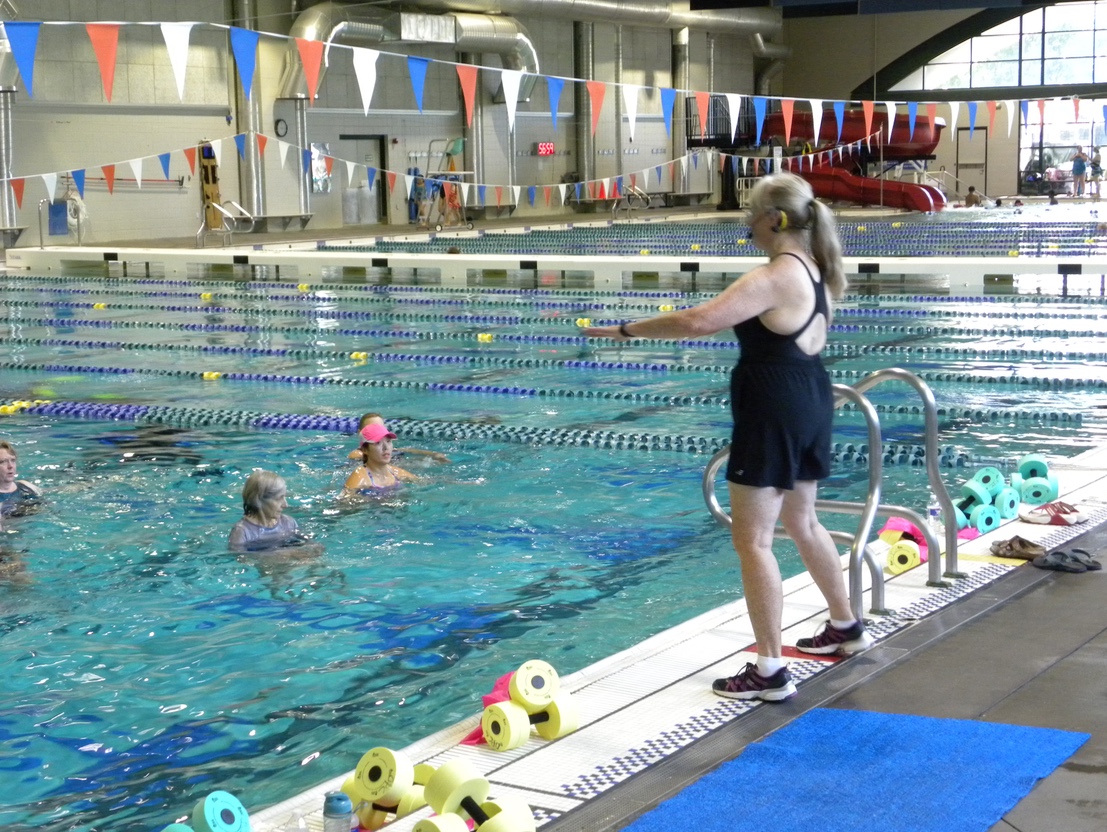 I like my class participants. Over the years I’ve heard about their families, their pets, their challenges, and which of my playlists they like. They are more than just class participants, they are friends. I want them to get a good, safe, effective workout every time they come to my class. I don’t want to bore them with the same old routines. I want to challenge them to progress in their levels of fitness. I want to help them make their hearts stronger, to give them an opportunity to improve their muscular endurance, to challenge them mentally, and I want them to have fun doing it.
I like my class participants. Over the years I’ve heard about their families, their pets, their challenges, and which of my playlists they like. They are more than just class participants, they are friends. I want them to get a good, safe, effective workout every time they come to my class. I don’t want to bore them with the same old routines. I want to challenge them to progress in their levels of fitness. I want to help them make their hearts stronger, to give them an opportunity to improve their muscular endurance, to challenge them mentally, and I want them to have fun doing it.